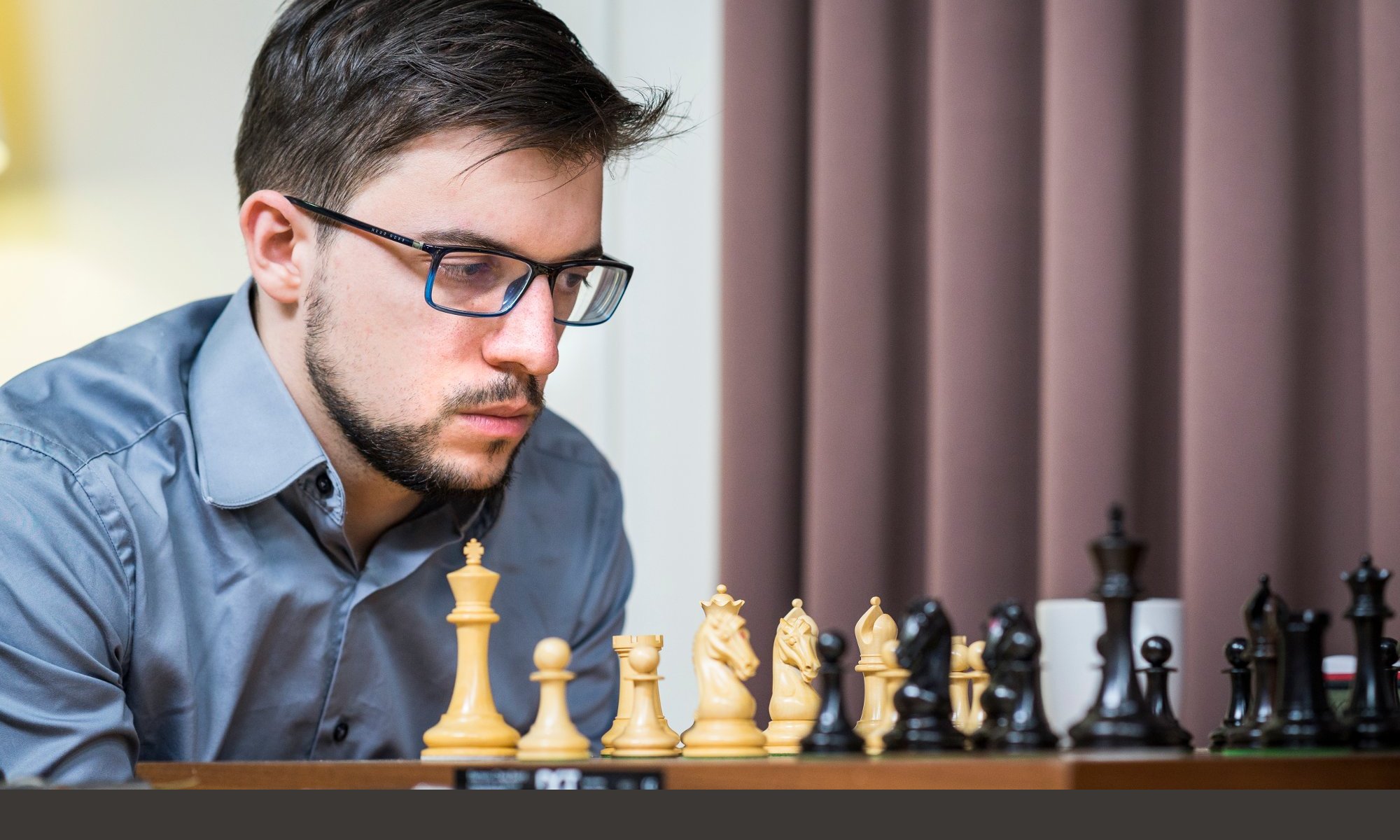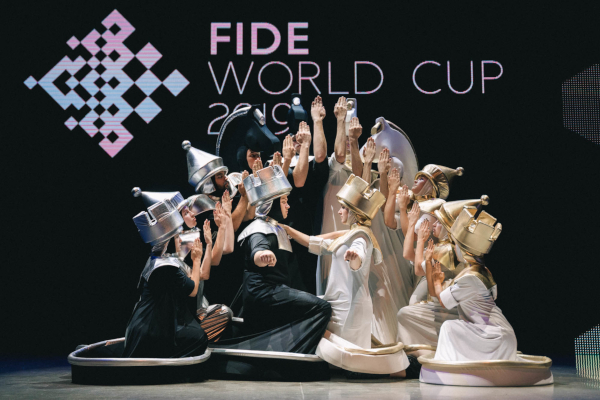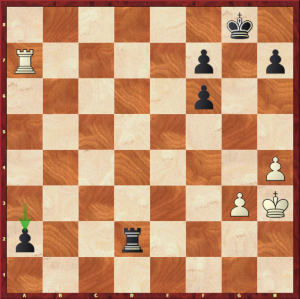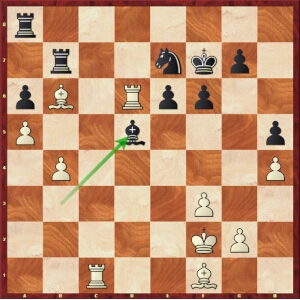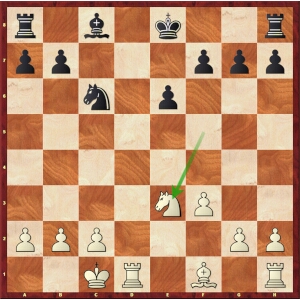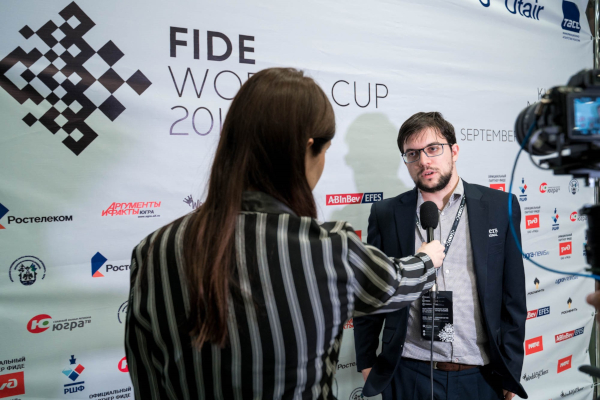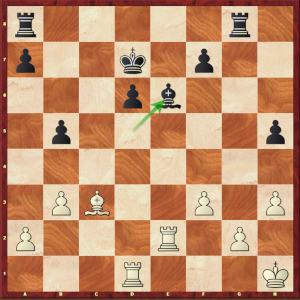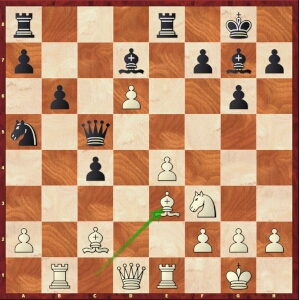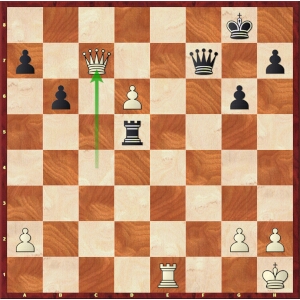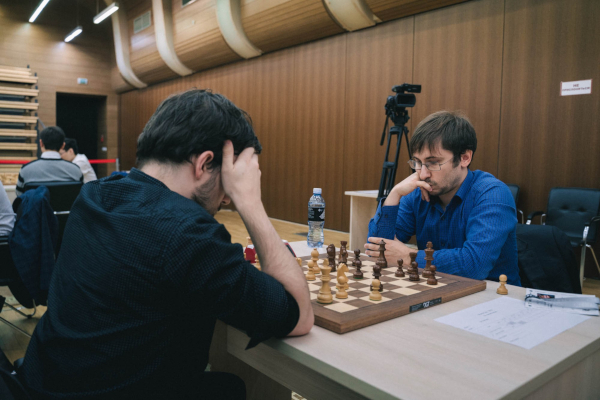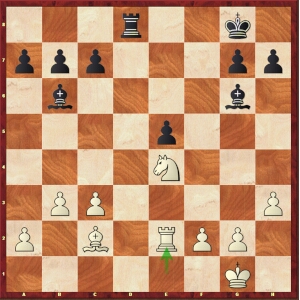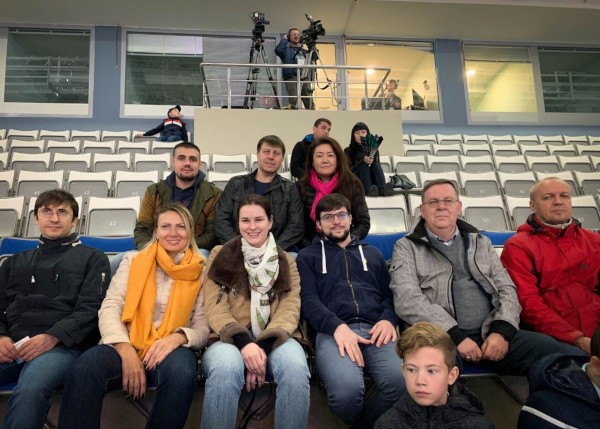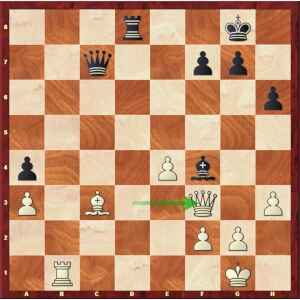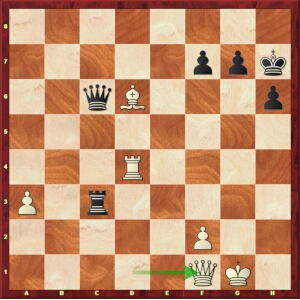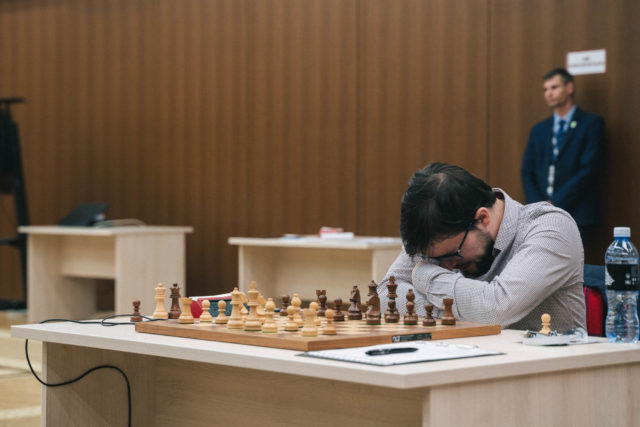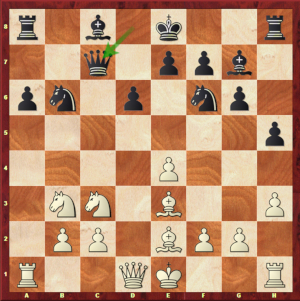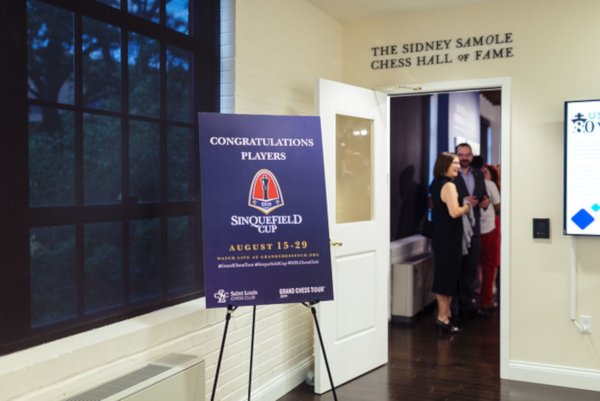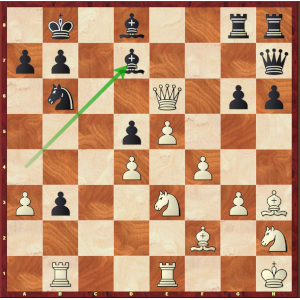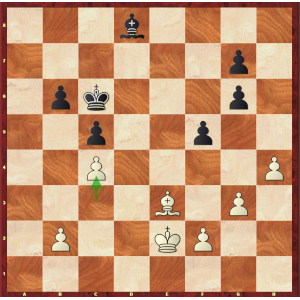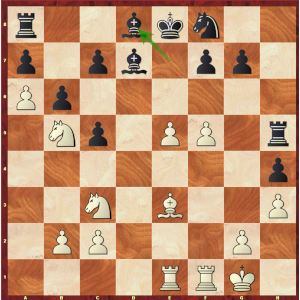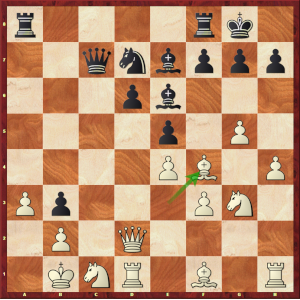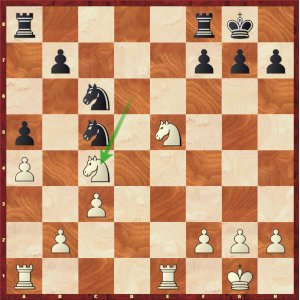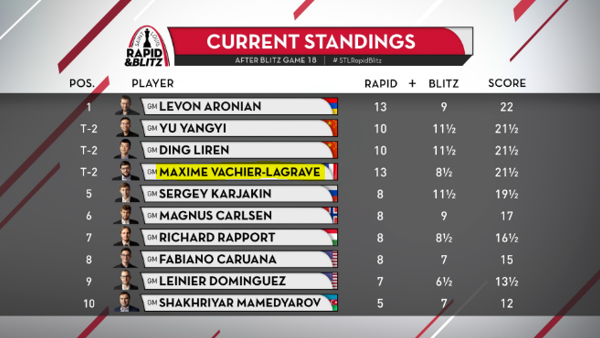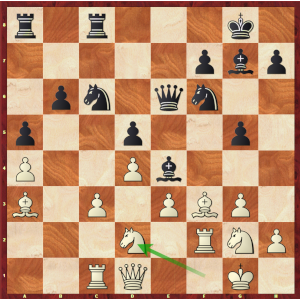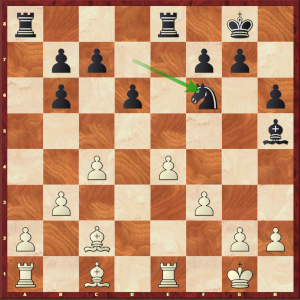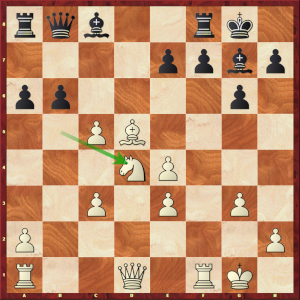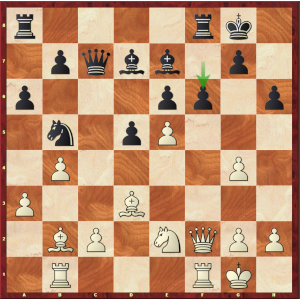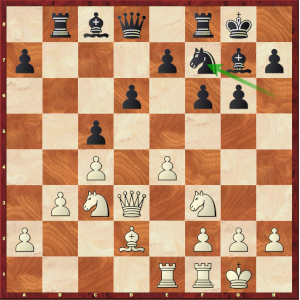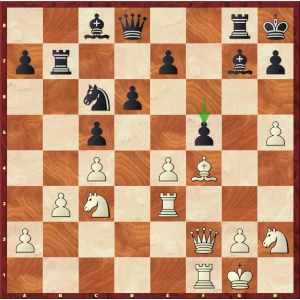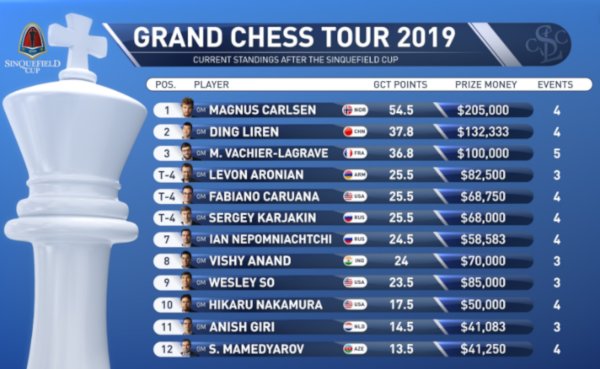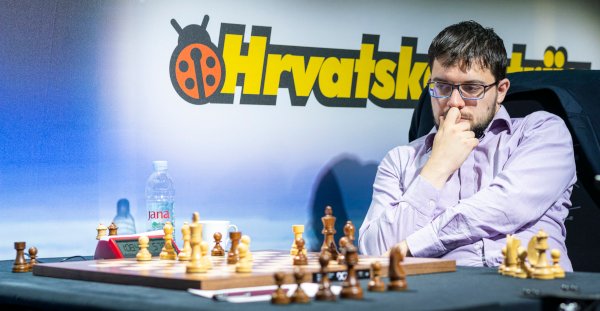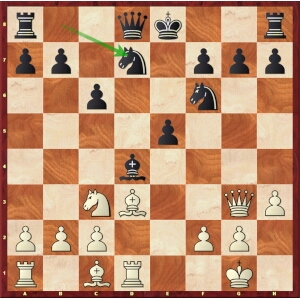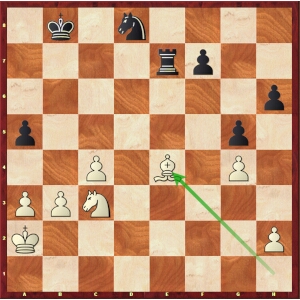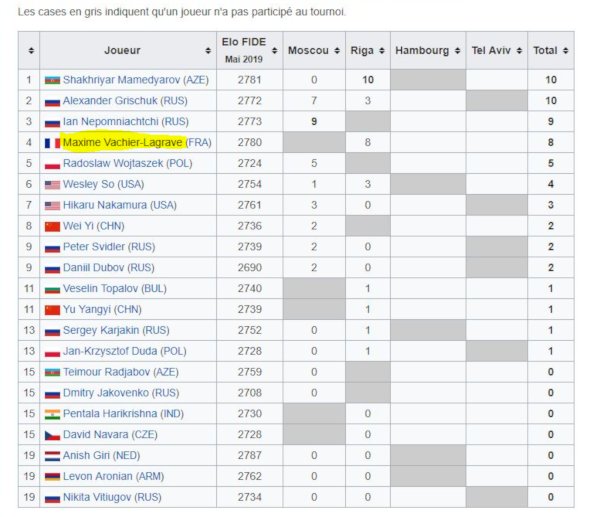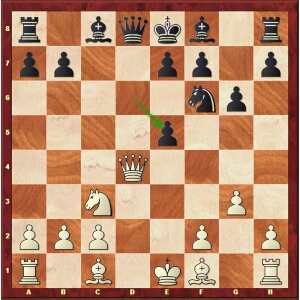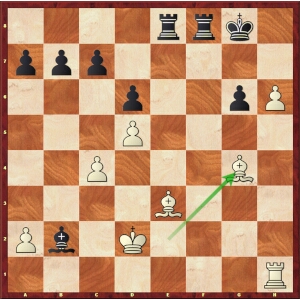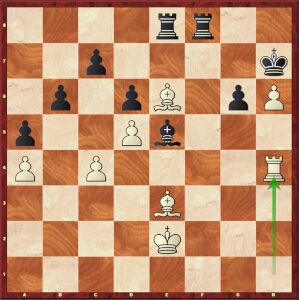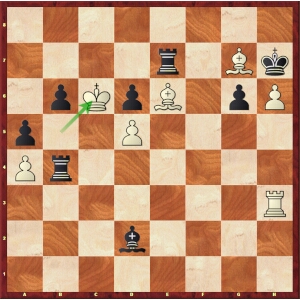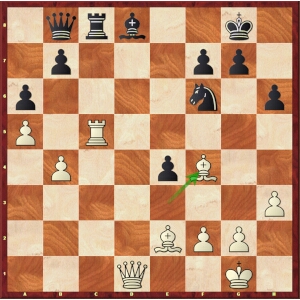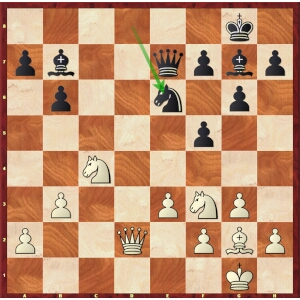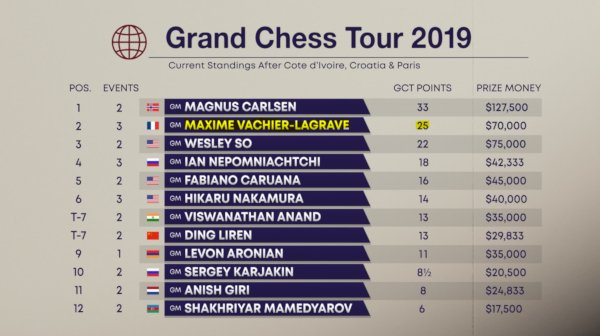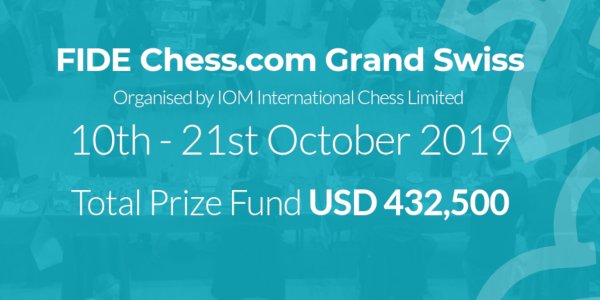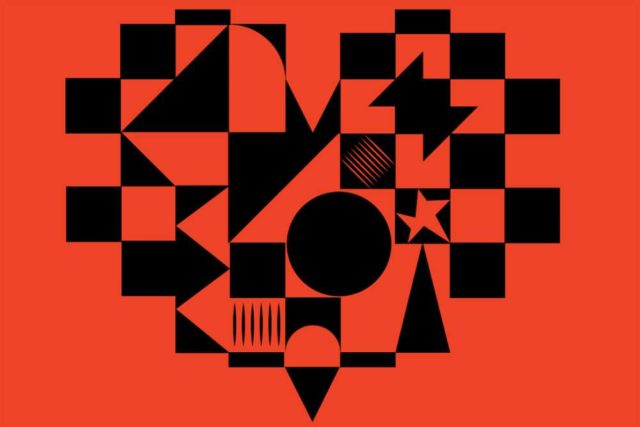¼ FINAL:
MVL – ARONIAN (2758) 2.5-1.5
In the first game with black, I knew what I was getting into when I entered this line of the 5.Bg5 Grünfeld. A position slightly difficult to defend where I will have to find one or two precise moves to equalize completely; which was the case after 25…f5! (draw, 44 moves).
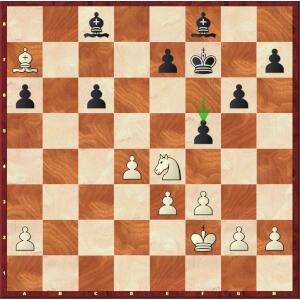
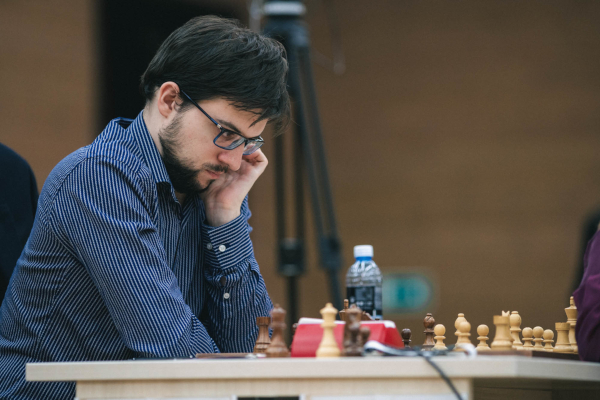
In the second game, I improved the variation of the Italian I played a few days earlier against Jakovenko, with 15.Ne4 instead of 15.Qe4.
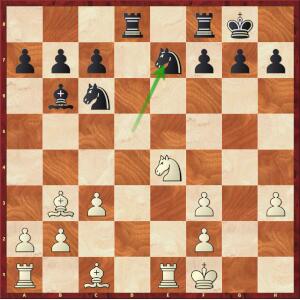
But I quickly made the mistake 19.Bg5? which doesn’t make any sense in fact, and that I played much too fast. In my mind 19…h6 20.Bh4 didn’t change anything, but in fact 20…g5 21.Bg3 Kg7 followed by …f5-f4 was clearly unappealing, so I had to resort to the sad 20.Bxe7.
It’s a pity because almost everything was better for White with the Bishop pair, for example 19.a4, or 19.Nd2-c4, or even 19.Bf4 (draw, 31 moves).
In the first Rapid game, I got a good opening position with black.
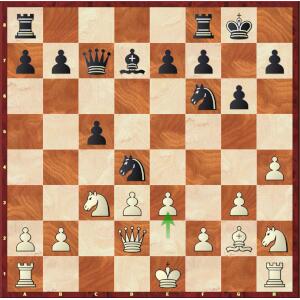
At one point, while trying to put pressure on the clock, I got a little carried away with 15…Bc6, forgetting 16.Ne4!. I should have played 15…Nc6. I know that Magnus, who was commenting live, rather criticized the next move 16…Bxe4, but at the board, I had the feeling that I had already spoiled the advantage. So Magnus and I come to the same conclusion but with a one-move delay!
After that, in my mind, I was still playing for the initiative. Besides, I’m puzzled that this position is not so good for Black, because when you look at it, it doesn’t seem bad at all! Still, I was a little surprised that he offered me a draw, because I saw a complex endgame coming up, where everything was still up for grabs (draw, 31 moves).
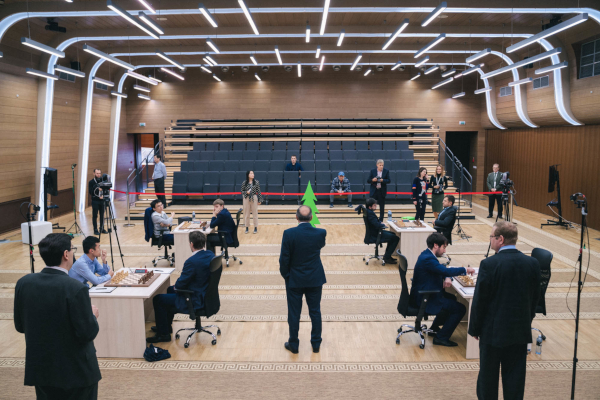
In the second tie-break, I had a good position but I really got tangled up with it.
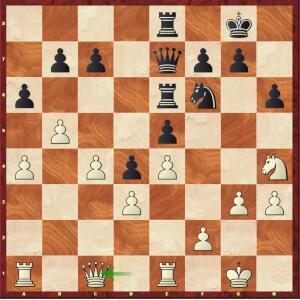
Here, I realized that black’s Knight was going to land on c5 and that I would have nothing left to play for. So I decided to go 22.Qc1 Nd7 23.Qa3 Nc5 24.f4. Obviously, I was very wrong because of 24…exf4 25.Nf5 Qf8 26.gxf4 Rf6 followed by the exchange sacrifice 27…Rxf5!, exploiting the absence of white’s Queen around the King. But you had to see the sac from the beginning of the variation, and I missed it throughout the line. Without this sacrifice, what I did would not have been so criticized! So it came as a cold shower to me, because at no point did I realize that there was this 27…Rxf5! looming. A few moves later, Levon missed a direct win, which I hadn’t seen either 🙂 ; but in Rapid games and tactically rich positions, these are inevitable things, you can’t see everything as the machine does.
After that, I felt that he no longer had much of an edge; and instead of taking the draw by perpetual check, he screwed it up horribly by giving a piece. Obviously, he understood right away what he had done and his face kind of crumbled (1-0, 53 moves).
It has to be said though that the World Cup format is very violent; we had the same day the dramatic Armaggedon game between Yu Yangyi and Vitiugov, a true breathtaking highlight of its kind….
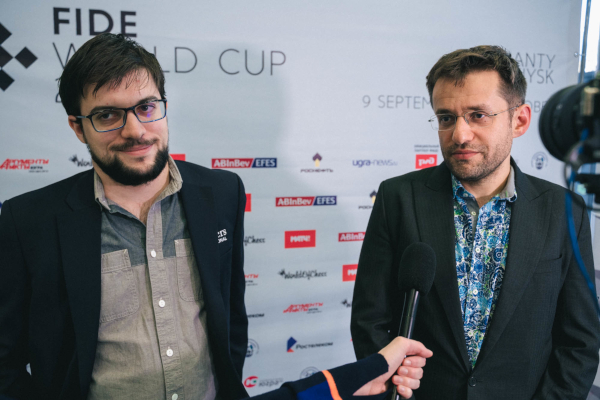
½ Final:
MVL – RADJABOV (2758) 0.5-1.5
In the first game, I played the first move of the tournament I was proud of; it was 11.Re1.
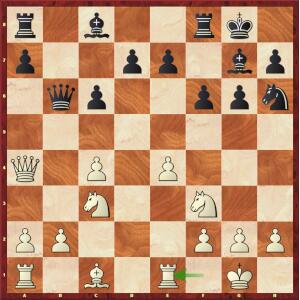
Besides, it’s not the move I had in my file 🙂 but at the board, 11.Re1, with the idea to play Be3, I really liked it. I was thinking it was a bit of a Grischuk move! You think about this position for 15 minutes, everybody wonders why as it seems to be useless; then you play this little move that looks harmless!
Fortunately for him, after 11…Nf7 12.Be3, he has 12…Qb7, only move. If 12…Qxb2? 13.Rab1! Qxc3 14.Bd4 Qd3 15.Rbd1 and the Rook protects e4! And if 12…Qa6 13.Qxa6 Bxa6 Fxa6 14.Rad1 followed by 15.c5 is unpleasant for black. After 12…Qb7, the problem for me is that I can no longer play 13.c5 because b2 can now be taken, as black’s Queen comes out of the trap via d3 and a6.
So I played 13.Qb3, and I was pretty happy with myself at the moment! I thought I was a little better, which was indeed the case in the game, but because he missed 13…Rb8! 14.Qxb7 Rxb7 15.b3 f5 16.Bd4 e5! and his dynamic counter-play compensates for what I thought was a static white advantage. On the other hand, after 13…Qxb3?! 14.axb3 Rb8 15.Rxa7 Rxb3 16.Na4 Rb7 17.Rxb7 Bxb7 18.Nb6!, I could claim an edge.
Unfortunately, there was a time when I didn’t quite understand the position. After 18…d6 19.c5 e5, I should have played 20.Ra1! instead of 20.b4?!.
In fact, I rejected it because I didn’t like the position after 20…d5 21.Ra7 Rb8, and 21.exd5 cxd5 22.b4 d4 also seemed very messy to me; I thought it could easily go wrong… But the truth is that it’s just a clear advantage for me, even though the position gets much more tense, and without any guarantees! As I played, I just gave up the advantage straight away (draw, 31 moves).
In the second game, as usual, I failed in the opening. I know I shouldn’t have played so fast…
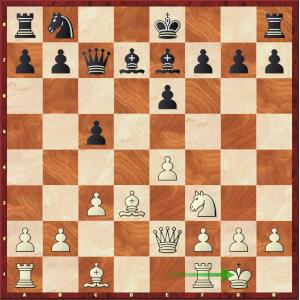
… What happened in my head is that instead of 10…0-0, I was planning 10…Bc6, but I saw the very unpleasant 11.b4!; if 11…cxb4 12.cxb4 Bxb4 13.Qb2!, and if 11…b6 12.b5 Bb7, white will manoeuvre the Knight towards c4. So I came back to 10…0-0, and I just thought that if 11.e5, I had 11…Bc6; I prevent 12.Qe4; I also prevent 12.Bg5, and that’s it.
And just when I put my King on g8, I saw 11.e5 Bc6 12.Ng5! and could contemplate the horror of my position!
Then there was not much to do, white’s attack is terrifying. What I should have played in practice – but I didn’t find the idea – was 12…g6 instead of 12…h6. After 13.Nxh7, certainly 13…Kxh7? loses on the spot to 14.Qh5+ followed by 15.Bxg6, but I had 13…c4!?, which complicates matters and was much less easy for him than in the game.
Later, the commentators felt that I would have had a small chance by exchanging Queens, which I could have done twice. But for me, the resulting endings were technically lost, so it wasn’t really an option either (1-0, 45 moves).
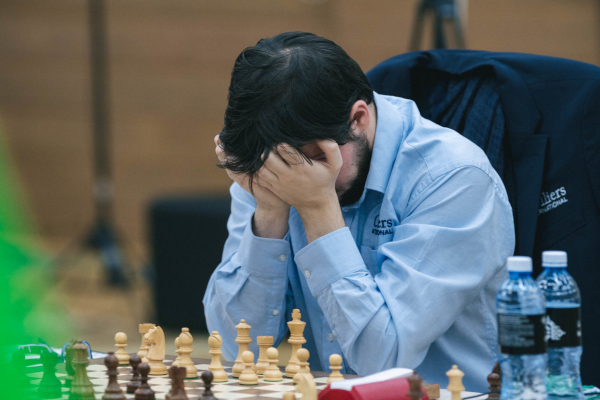
As a result, I came out of the World Cup through the back door, missing my direct qualification for the Candidates at the last hurdle once again. That night, I was disgusted and I would have flown back to Paris right away, but no way it could be! There was still a week left to play the match for third place against Yu Yangyi!
MATCH FOR 3rd PLACE:
MVL-YU YANGYI (2763) 4-2
So I tried to think of something else, I did a little bit of everything for the two days off before this last match. I had already been in « power saving mode » for some time, and it was even more so against Yu.
In the first game, he played a new move in the main line of the 5.Qb3 Grünfeld.
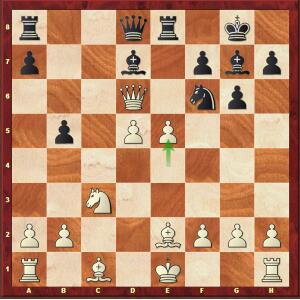
I’ve been waiting for this 15.e5 for so long! It’s been 6 years since I’ve had it in my files, including the endgame position we got after 15…. Ng4 16.e6 fxe6 17.h3 Ne5 18.dxe6 Bxe6 19.Qxd8 Raxd8 20.Bxb5 Bc4 21.Bxe8 Nd3+ 22.Kf1 Bxc3 23.bxc3 Nxc1+ 24.Kg1 Ne2+ 25.Kh2 Rxe8 26.Rhe1 🙂 . I think all the specialists of this line were also aware of this move 15.e5, and knew that it gave positions where black must make 2-3 precise moves to equalize (draw, 36 moves).
In the second game, I didn’t expect him to play a Russian line he had tried a few weeks earlier against Wei Yi, but which seemed a little artificial to me. But the fact is, I didn’t get anything… (draw, 30 moves).
In the third game, I was in trouble in a very rare line of the Exchange Grünfeld, with an early 9.d5 push.
I decided to react in a very concrete way by amplifying the central tension with 12…f5, which was clearly not necessary. He responded very effectively!
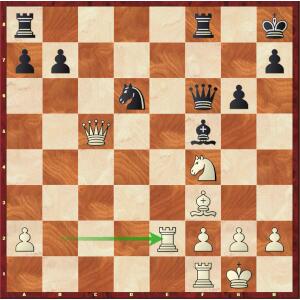
… And it was after 21.Re2! that I realized I was clearly not doing well. Luckily, after 21…Rfc8 22.Qa5 Rc4 23.Nd5 Dd4 24.Re7 Rac8, he didn’t play 25.Qa3! which would have left me in great difficulty after 25…Qc5 26.Qxc5 R4xc5 27.g4! and my position is hanging only by a thread. During the game, it was impossible to measure precisely what was happening, but the fact is that I didn’t feel particularly reassured; I imagined that there were things that could easily go wrong! My belief is that he thought he took a clear advantage with 25.Rd1 Rc1 26.Ree1, but that he overlooked 26…Nc4 27.Qb4 Rxd1 28.Rxd1 Qb2 29.Qe7 Qg7! and the worst is behind me (draw, 32 moves).
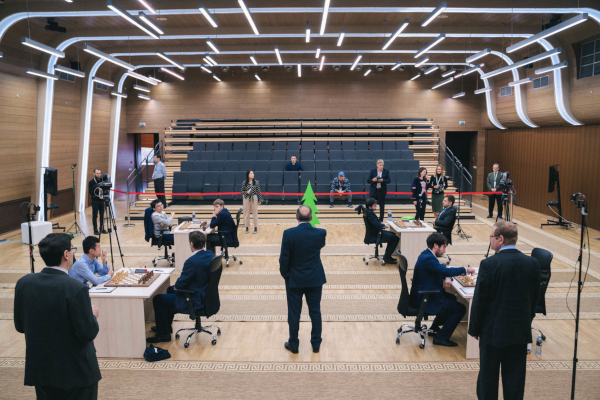
In the last classical game, Yu made a surprising new choice in the Russian Defense. I thought I was a little better in a position that reminded me of the Topalov-Giri game, Wijk aan zee 2012, won by white.
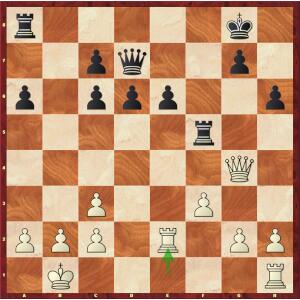
It seemed to me that in the long run, as in Topalov’s game, white’s King was safer than his counterpart. It’s true I had forgotten the doubled c pawns of Giri, which were an aggravating factor for black.
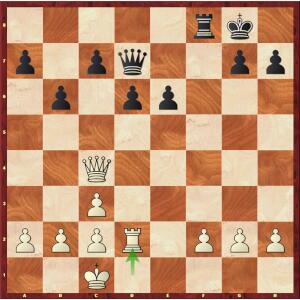
In our game, I may have overestimated my position because in fact, I can’t play g3 and f4 to fix the structure, in which case I could have pounded the e6 pawn and claimed the advantage. Unfortunately, if instead of 19.Td2 in the diagrammed position, I had played 19.f4 – which was indeed my first idea – black completely equalizes with 19…Qf7! 20.g3 e5 and a drawn endgame is coming up. As a result, I couldn’t find any realistic way to play for the win (draw, 30 moves).
In the first tie-break game, Yu gave up defending a third Russian Defense! Overall, I played a good game, even if I missed a quick mate that would have ended his suffering earlier!
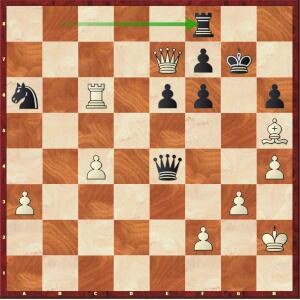
Here, I opted for a winning heavy pieces ending after 42.Rxa6 Qf5 43.Kg2 Qxh5 44.Rxe6, but of course, 42.Rc8! Rxc8 43.Qxf7+ Kh8 44.Bg6 was more effective! (1-0, 66 moves).
In the second Rapid game, he had to win but he completely screwed up in the opening and I won easily.
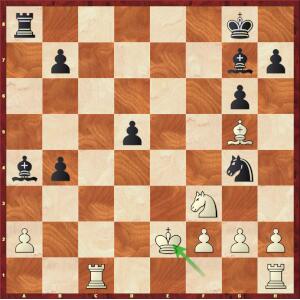
23…Bb5+ 24.Ke1 Bc3+ 0-1 illustrates the power of the Bishop pair!

Even if a bronze medal at the World Cup remains an excellent result, I still have mixed feelings about the month of September I spent in Russia 🙂 . However, before the World Cup, I was counting much more on the FIDE Grand Prix series. The World Cup was a ” bonus attempt ” to qualify for the Candidates; I considered that I had a 15-20% chance to succeed.
Of course, it’s frustrating to lose in the semi-finals and to end up being the first unqualified player once again. But on the other hand, there were a lot of very shaky moments, and I could really have been ousted of the tournament earlier! Overall, I didn’t play as well at this World Cup as I did in 2017, when I think I really deserved more.

Now, I have the last two FIDE Grand Prix tournaments in Hamburg and Tel-Aviv left; I think I have a good chance of qualifying, over 50%. As for the speculations on the wild card that the Russian organisers will give, I prefer to leave them to the commentators.
That’s not my subject right now… Mine is to be at the top on November 5th in Hamburg!
The French team is currently competing in the European Team Championship in Batumi (Georgia). As he had the opportunity to explain several times, Maxime had decided at the beginning of 2019 that this year’s international calendar would not allow him to participate. It is clear that this problem of flagrant imbalance between the two semesters of the year, one very airy, and the other very congested, will have to be resolved as a priority for the 2020 season.
Let’s take advantage of the European Championship underway to watch a nice video animation that traces many figures on the French chess Elite since the beginning of the century… (thanks to Natacha for the realization) 🙂 .
An opportunity to learn that Maxime has just celebrated another birthday than his 29th one, since with 106 months spent as France’s top player, he has beaten the old record held until now by Joël Lautier (105 months between 1990 and 2004)!
Les parties de Maxime :
